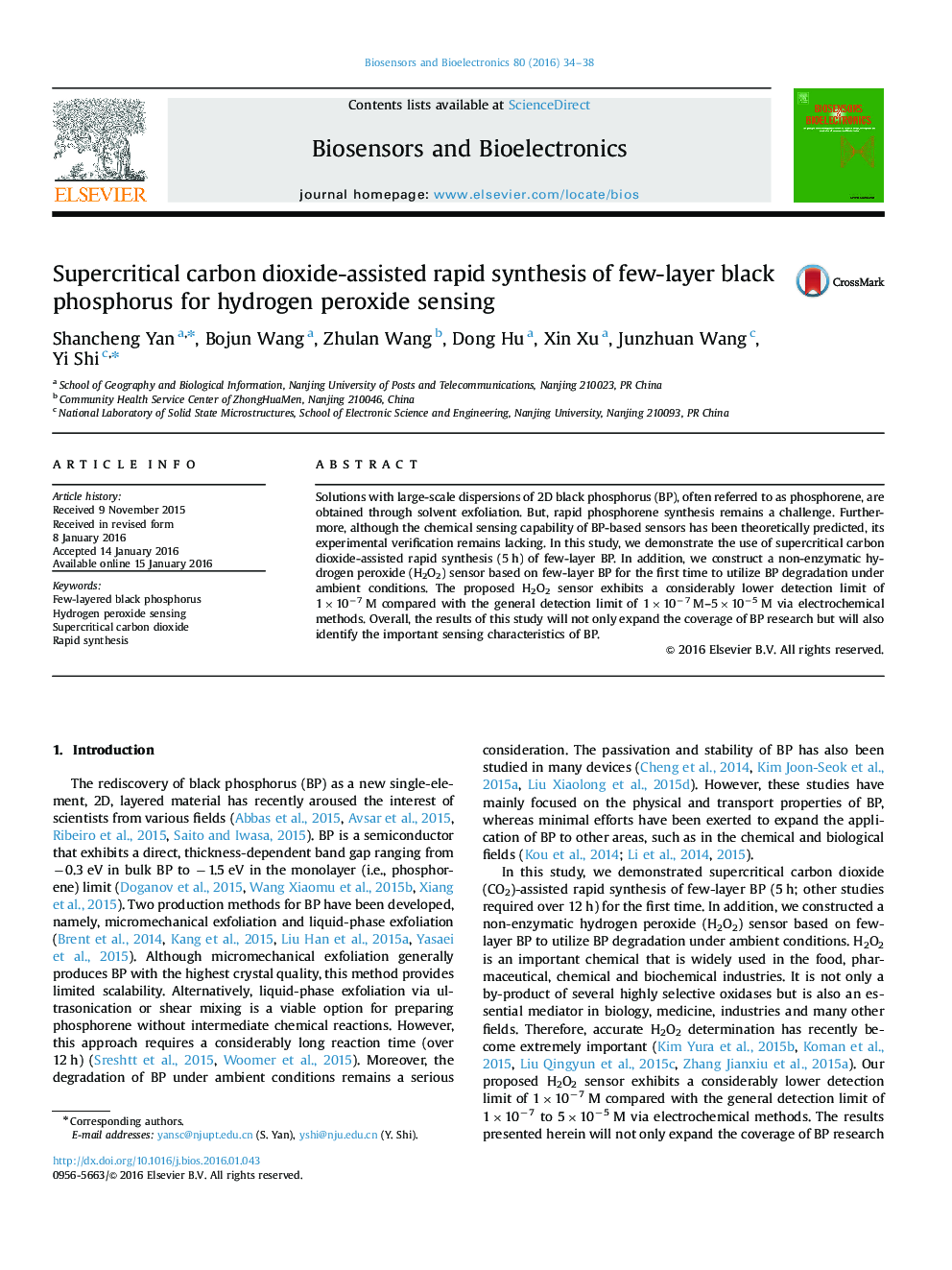| Article ID | Journal | Published Year | Pages | File Type |
|---|---|---|---|---|
| 7231046 | Biosensors and Bioelectronics | 2016 | 5 Pages |
Abstract
Solutions with large-scale dispersions of 2D black phosphorus (BP), often referred to as phosphorene, are obtained through solvent exfoliation. But, rapid phosphorene synthesis remains a challenge. Furthermore, although the chemical sensing capability of BP-based sensors has been theoretically predicted, its experimental verification remains lacking. In this study, we demonstrate the use of supercritical carbon dioxide-assisted rapid synthesis (5Â h) of few-layer BP. In addition, we construct a non-enzymatic hydrogen peroxide (H2O2) sensor based on few-layer BP for the first time to utilize BP degradation under ambient conditions. The proposed H2O2 sensor exhibits a considerably lower detection limit of 1Ã10â7Â M compared with the general detection limit of 1Ã10â7Â M-5Ã10â5Â M via electrochemical methods. Overall, the results of this study will not only expand the coverage of BP research but will also identify the important sensing characteristics of BP.
Related Topics
Physical Sciences and Engineering
Chemistry
Analytical Chemistry
Authors
Shancheng Yan, Bojun Wang, Zhulan Wang, Dong Hu, Xin Xu, Junzhuan Wang, Yi Shi,
